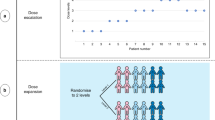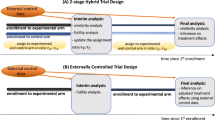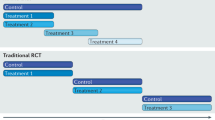Abstract
Most randomised clinical trials of cancer treatment include a few hundred patients or less. Recent statistical papers advocate that sometimes thousands of patients should be entered. In this paper I show that for certain types of cancer trials the 'thousands policy' is not required while for others it is desirable but not feasible. In the latter case other strategies should be considered, such as two-stage phase III studies or parallel studies leading to overviews. There is, however, an important subset of trials for which application of the thousands policy is both necessary and feasible. The key to progress lies partly in the achievement of greater recruitment rates in trails of common cancers and partly in greater inter-group collaboration.
This is a preview of subscription content, access via your institution
Access options
Subscribe to this journal
Receive 24 print issues and online access
$259.00 per year
only $10.79 per issue
Buy this article
- Purchase on Springer Link
- Instant access to full article PDF
Prices may be subject to local taxes which are calculated during checkout
Similar content being viewed by others
Author information
Authors and Affiliations
Rights and permissions
About this article
Cite this article
Freedman, L. The size of clinical trials in cancer research – what are the current needs?. Br J Cancer 59, 396–400 (1989). https://doi.org/10.1038/bjc.1989.79
Issue Date:
DOI: https://doi.org/10.1038/bjc.1989.79



